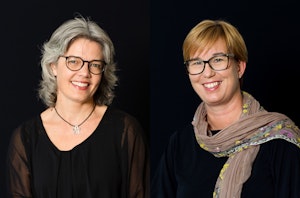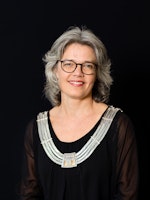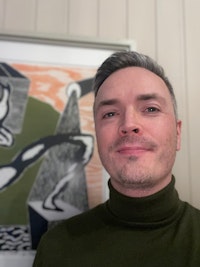The project aims to achieve better gender balance, greater diversity, and increased awareness of inclusion in hiring and promotion at the Norwegian Academy of Music.
One million kroner for project on gender balance, diversity, and inclusion

NMH receives one million kroner from the Research Council for a two-year project on gender balance, diversity, and inclusion in higher music education. – This is a great joy, and a push to work even more systematically with diversity, says rector Astrid Kvalbein and vice-rector Sidsel Karlsen.
Awareness and Knowledge
Part of the work will be to increase awareness and knowledge of the structural causes of imbalances related to gender equality and diversity, career paths, requirements, and evaluation processes. Among other measures, organizing seminars and debates will be part of the work.
– Gender stereotypes are strong in the music industry, and progress is surprisingly slow, unfortunately also at NMH. For example, there is an overrepresentation of men on the artistic side and an overrepresentation of women in parts of the administration. Apparently, the small day-to-day decisions made are not enough to achieve rapid change. The fact that we are now receiving resources to work even more systematically is a gift, says Kvalbein.
She has been engaged with the topic of gender equality in the music industry for many years, also studying women from a historical perspective.
– Strong structures are regulating this. But there is a fortunate development happening at NMH, and we hope this project will boost that development, adds Sidsel Karlsen, who is the project leader and head of the college's committee for diversity and gender equality.
Karlsen has also been involved in several research projects on diversity, including the project Musical Gentrification and Socio-Cultural Differences.
– Gender stereotypes are strong in the music industry, and progress is surprisingly slow, unfortunately also at NMH.
Kvalbein
A Homogeneous Group
According to the application sent to the Research Council, research shows that the art field is mainly populated by individuals of ethnic Norwegian background from the middle or upper middle class. This is reflected in recruitment to higher music education institutions, where most of the staff have completed such education themselves.
Admission to higher music education usually requires auditioning, and we know the foundations are laid early in life. Already at this stage recruitment is affected by demographic imbalances.
A majority of the performing music students have parents with higher education, and the chance of being admitted to performing arts programmes is many times higher for someone with parents from the «cultural upper class» than for someone from the working class. Children of parents who are themselves trained musicians are also significantly overrepresented.
Role Models
NMH is also characterised by structural challenges resulting in gender imbalance in particular subject areas. In 2023, the percentage of women in professor and associate professor positions was 32.7%. This is close to the national average, although very unevenly distributed within the organisation. While the percentage of women in top positions is high in areas such as music therapy and music education, representation on the artistic side is much lower.
There are few female employees in fields such as composition, orchestral conducting, music technology, jazz, and improvised music.
The application states: «This is problematic considering broad student recruitment and the need for female students to have role models of the same gender.»
Visibility Bank
A so-called «visibility bank» will showcase the work of women and individuals from various minority backgrounds. Here, artistic and scientific staff will tell a collection of professional life stories.
– Role models are essential for recruitment. Especially in an educational institution, we should not underestimate the effect of presenting role models who do not look exactly like the ones you've seen before.
Kvalbein

– I believe in the visibility bank. Role models are essential for recruitment. Especially in an educational institution, we should not underestimate the effect of presenting role models who do not look exactly like the ones you've seen before, says Kvalbein, continuing:
– How many students leave primary school today having seen a female composer? Or a female drummer in action? How many of them do young people see on YouTube? Highlighting those who, unfortunately, are still exceptions to the rule is important.
Karlsen picks up the thread: – For the individual, it's about having someone who resembles oneself, regardless of the parameters one wants to compare. For me, having female role models has meant a lot, both as a researcher and a professor.
– For me, having female role models has meant a lot, both as a researcher and a professor.
Karlsen

Kvalbein and Karlsen highlight examples of role models that have meant a lot at NMH, such as the female composition teachers, Siw Graabræk Nielsen, who was the first female music education professor in Norway, and Ingrid Maria Hanken; former vice-rector and the first leader of the Centre for Excellence in Music Performance Education (CEMPE).
Recruiting
On artistic grounds, recruiting teachers for higher music education usually occurs among those who have succeeded in the performing arts field. Thus, the field's challenges are reproduced. This particularly applies to the traditionally male-dominated parts of the music field.
Research shows how gender often plays a role in understanding quality when assessing professor and associate professor competence in the arts. We have reason to believe that such dynamics also exist at other levels of appointments and promotions within these disciplines and contribute to maintaining male dominance.
Promotion Courses and Mentorship Programme
Part three of the project is a promotion course and mentorship programme for employees who wish to qualify for promotion to first competence or associate professor/professor. Since the gender equality challenges at NMH are not evenly distributed among subject areas, the target group will primarily be female employees on artistic grounds. However, the offers will also be open to interested parties on the academic side if the number of places is sufficient.
Balance Hub
The project is linked to a network led by NIFU (Nordic Institute for Studies in Innovation, Research and Education). NIFU has been tasked with being a resource centre, a so-called Balance Hub, organizing network meetings for the organizations that have been allocated funding in the Research Council's programme for gender balance, diversity, and inclusion.
Sidsel Karlsen will be NMH's representative in the network.
– We need help from others, and now we get to network with several other organizations working towards the same goal. We have different starting points, but the goal is to become more balanced together. I am sure we can learn from each other, and understand ourselves better by looking at others. Not least, we can get new ideas, concludes Karlsen.



